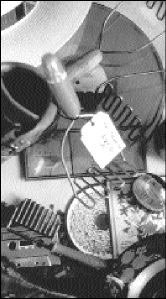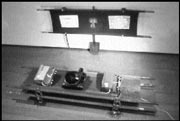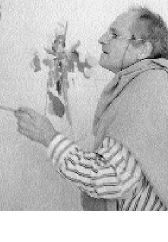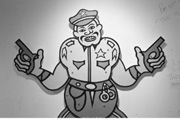LATE IN HIS LIFE, Pablo Picasso said, “I’ve always been able to draw. As a child, I drew like Raphael, but I’ve spent my whole life learning to draw like a child.” By the time he and his friend, The Wages of Fear director Henri-Georges Clouzot, collaborated to make this novel 1956 documentary, Picasso had indisputably attained that goal.
The Mystery of Picasso
directed by Henri-Georges Clouzot runs March 2-8 at Egyptian
Childlike in not only ease of execution but also their freedom from formal standards, his drawings here are sublimely naive, even awkward, but enchantingly so— in many ways, the Picasso trademark. But simplicity never came without dark emotional undercurrents, complex symbolism, and careful composition.
Not unlike the drip-painting-on-glass documentary re-enacted in Pollock, Mystery places its camera behind a semitransparent scrim on which the artist draws, allowing the ink to show through. Clouzot thus captures the perfect reverse image of Picasso’s work as it evolves, documenting each stroke of his pen, each flourish of his brush; the screen itself becomes his canvas.
Most intriguing are the mistakes, hesitations, and erasures Picasso makes while the camera continues to roll. One false movement causes a domino effect of corrections that cascade across the surface and transform a work into something utterly removed from its beginnings.
Herein lies genius. These progressions illustrate the train of thought, the decisions of a master artist. Sometimes it’s quite funny: A fish becomes a rooster becomes a devilish mask; a delicate scene is covered over with thick black, obliterated. Other times, it’s painful to watch. The impulse to shout, “Pablo, stop already, leave well enough alone!” is strong. One begins to wonder whether Cubism wasn’t borne of the simple errors of careless doodling. (Significantly, Picasso subsequently destroyed all the speedy efforts created for this film.)
In 75 minutes, Picasso makes 20 works ranging from simple, cartoonlike, black-and-white sketches to elaborate paintings. There’s next to no dialogue. (Only in a few brief segments do we see Picasso conversing casually with the crew.) Toward the end, he begins to make more complex paintings and collaged murals with oil colors. The drama mounts as the last reel switches to CinemaScope and the screen spectacularly widens. Enormous paintings that take five hours to achieve appear in five minutes of stop-motion animation—the effect is mesmerizing. Picasso builds, alters, pastes, and scratches away, eternally changing the surface, the composition, and the color scheme of these monumental works. Colors and shapes morph and dance on the screen, allowing for an astounding glimpse into the creative process.








